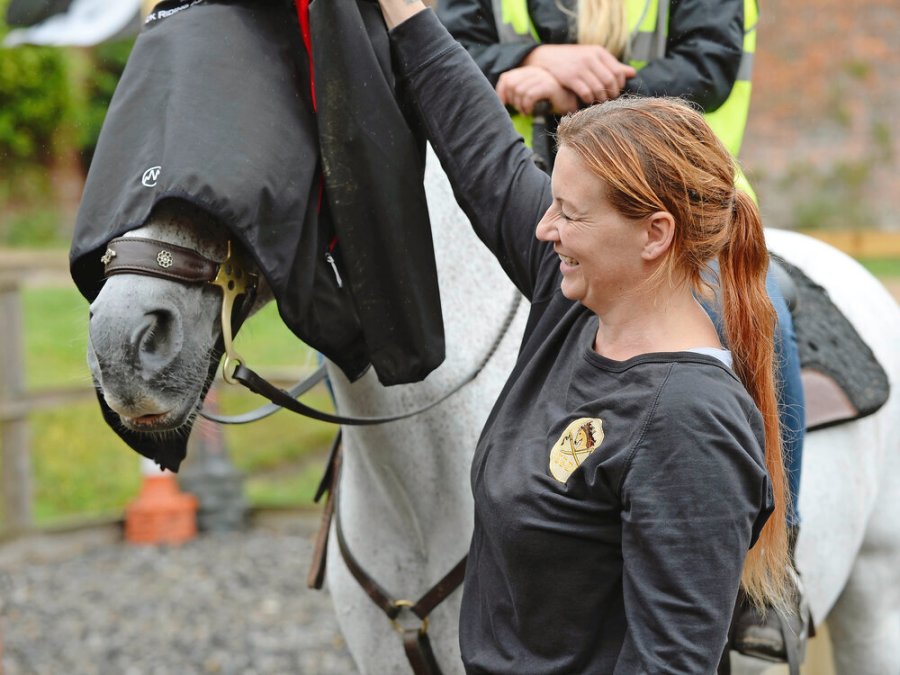Stunt horses need to be able to deal with anything, but they’re not born brave – like all horses, they have an innate flight instinct. Trainers and stunt riders Karl Greenwood and Zana Cousins-Greenwood share their know-how.
Training horses to accept whatever comes their way is vital, and this takes trust in you.
“One of the first things we do is make everything normal, no matter what that is,” explains Karl. “Take flags, for instance. Much of the stunt work we do involves a waving flag, whether at events or on a film set and there are no concessions for horses taking a dislike to them. So we have to make sure out lot are blasé about the whole thing.
“If you visit our yard, you’ll see flags flying from poles on the arena fence all the time. We don’t take them down if a horse reacts to them; instead we stay focused and he has to get on with it. If you move the scary object, all you’re doing is delaying the inevitable.”
Karl uses every opportunity to desensitise his horses. If there’s a gardener working at the yard, he’ll ask him to work closer and closer to the arena while the horses are being schooled.
He’ll put wheelie bins in the corner of the arena, work the horses for a short while, then move the bins to the middle.
“Even horses that are not destined for the big screen need to be taught how to cope. It makes everything easier and more enjoyable.”
Take control of the situation
With horses that take a real dislike to objects and are genuinely scared, Karl creates a controlled environment to help them.
For example if a horse takes a dislike to the flags, he’ll be fed beneath it for a few days. If he’s scared of a quad bike (which the staff use around the yard), then one will be parked in the horse’s field until he’s happy with it.
Your horse will look to you to tell him how to react to things. If he’s unsure, you have to remain relaxed and keep a positive mindset while ignoring whatever object is bothering him.
Zana is an advocate of spook-proofing too. “I do star jumps near the horses, flap my coat about, take it on and off right next to them, put it over their head, ride in the school accompanied by people on pushbikes,” she says.
“It’s important that you don’t dumb things down. Get creative and have fun. What’s the craziest thing you can do while keeping everyone safe? Your horse will soon learn with repetition and reassurance.”
Don’t miss the latest issue of Your Horse Magazine, jam-packed with training and veterinary advice, horse-care tips and the latest equestrian products available on shop shelves, on sale now.









